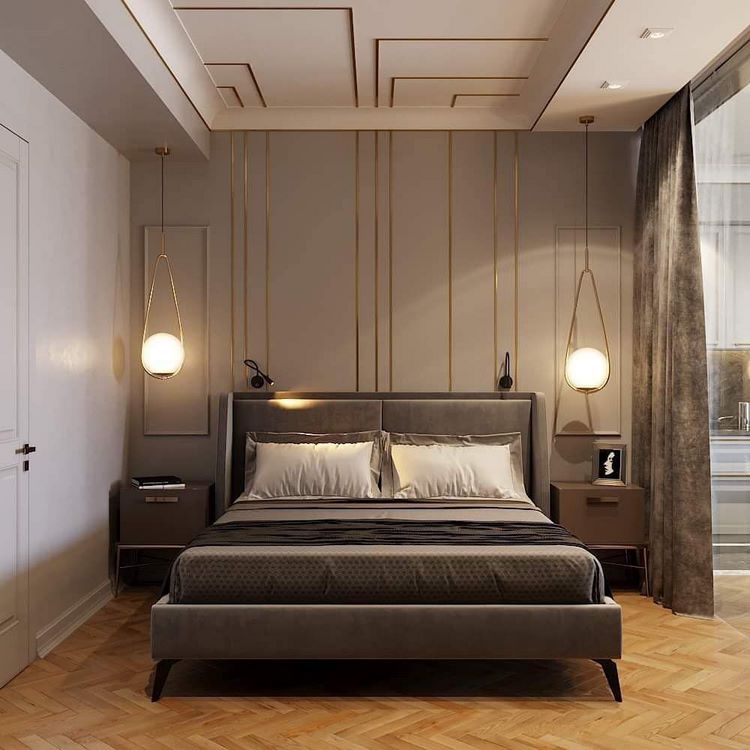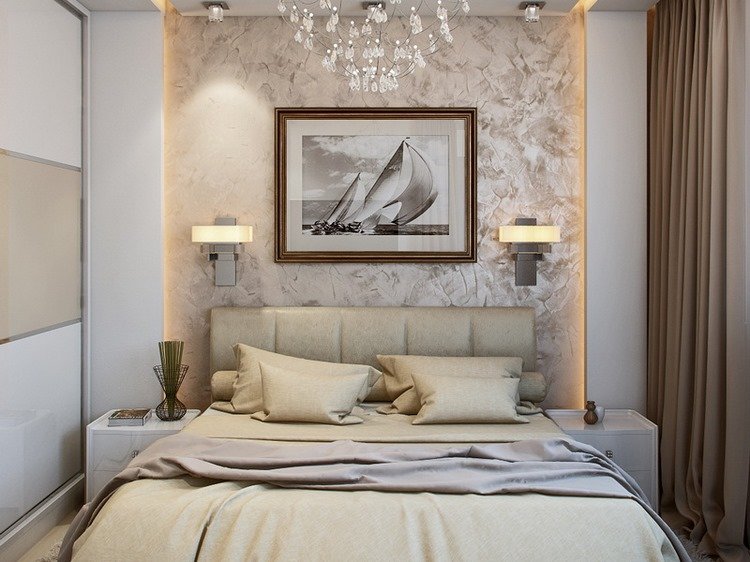Maximizing Space and Light: Small Bedroom Without Window Ideas

Transforming a small bedroom without a window into a comfortable and inviting space requires a thoughtful approach to maximizing space and creating an illusion of openness. By employing strategic design techniques, you can enhance the feeling of spaciousness and create a welcoming atmosphere.
Mirrors and Reflective Surfaces
Mirrors are powerful tools for expanding the perceived size of a room. Placing a large mirror strategically on a wall can create the illusion of depth and make the space feel more expansive. Mirrors can also be incorporated into furniture, such as mirrored closet doors or a mirrored dresser, further amplifying the effect.
- Mirrors reflect light, enhancing the brightness and making the room appear larger.
- Strategically placed mirrors can create the illusion of additional windows, bringing in more light and openness.
- Mirrored furniture can add a touch of elegance and sophistication while simultaneously maximizing space.
Importance of Light, Small bedroom without window ideas
Light is crucial for creating a sense of spaciousness and airiness in a small bedroom. Natural light, if available, should be maximized. However, in a windowless room, artificial lighting becomes even more critical.
- Use a combination of different light sources, such as overhead lighting, lamps, and accent lights, to create a layered and inviting ambiance.
- Opt for warm white or soft white bulbs to create a cozy and inviting atmosphere.
- Strategically place lamps and light fixtures to highlight specific areas and create visual interest.
Layout and Furniture Placement
The layout of furniture plays a crucial role in maximizing space in a small bedroom.
- Opt for multi-functional furniture, such as a bed with built-in storage or a sofa bed that can double as a guest bed.
- Place furniture strategically to create a sense of flow and avoid clutter. Avoid placing furniture directly against walls, allowing for a sense of openness.
- Utilize vertical space by incorporating shelves, wall-mounted storage solutions, and tall bookcases.
Color Palettes
Color can significantly impact the perception of space. Light and airy colors, such as white, cream, and pastels, can make a room feel larger and more inviting.
- Utilize a light color palette for the walls and ceiling to create a sense of spaciousness.
- Incorporate pops of color through accent furniture, artwork, and accessories to add personality and visual interest.
- Avoid using dark colors, as they can make a small space feel cramped and claustrophobic.
Enhancing the Ambiance

A small bedroom without a window can feel enclosed and lackluster. However, with strategic design choices, you can create a calming and inviting atmosphere that feels spacious and welcoming.
Mood Board
A mood board is a visual representation of your desired design aesthetic. It helps to solidify your vision and guide your choices. For a small bedroom without a window, consider incorporating elements that evoke feelings of serenity and spaciousness. You can create a mood board using images of:
- Minimalist design: This style emphasizes simplicity and clean lines, creating a sense of calm and spaciousness. Think light colors, natural materials, and minimal decor.
- Scandinavian design: This style is known for its use of natural materials, light colors, and functional furniture. It creates a sense of warmth and comfort.
- Bohemian design: This style is characterized by its eclectic mix of patterns, textures, and colors. It can add a touch of whimsy and personality to a small space.
- Japanese design: This style emphasizes simplicity, natural materials, and a sense of tranquility. It can create a serene and calming atmosphere.
Incorporating Natural Elements
Bringing the outdoors in can help to brighten and refresh a small bedroom without a window. Consider using:
- Plants: Plants can purify the air, add color, and create a sense of life. Choose low-maintenance plants that thrive in indoor conditions, such as snake plants, peace lilies, or spider plants.
- Wood accents: Wood adds warmth and texture to a space. Incorporate wooden furniture, shelves, or decorative elements like a wooden headboard or a small wooden sculpture.
- Natural fabrics: Use natural fabrics like cotton, linen, or wool for bedding, curtains, or throws. These materials are breathable and create a cozy and inviting feel.
Textures and Patterns
Textures and patterns can add visual interest and depth to a small bedroom without a window. Consider using:
- Textured walls: A textured wall can create a sense of depth and dimension. You can use textured paint, wallpaper, or even a brick accent wall.
- Patterned bedding: A patterned duvet cover or throw can add a touch of personality and visual interest to the bed. Choose a pattern that complements the overall design scheme.
- Rugs: A rug can define the space and add warmth and texture. Choose a rug with a pattern that complements the overall design scheme.
Sensory Elements
Sensory elements can enhance the ambiance of a small bedroom without a window, creating a relaxing and inviting atmosphere. Consider incorporating:
- Aromatherapy: Essential oils can be used to create a calming and relaxing atmosphere. Lavender, chamomile, and sandalwood are known for their calming properties.
- Sound: Soft music, nature sounds, or white noise can create a soothing and peaceful atmosphere. You can use a speaker or a white noise machine.
- Lighting: Soft lighting can create a warm and inviting atmosphere. Use dimmable light bulbs and consider using lamps or string lights to add ambiance.
Layout
The layout of a small bedroom without a window is crucial for creating a comfortable and inviting space.
- Furniture placement: Arrange furniture strategically to maximize space and create a sense of flow. For example, place the bed against the wall, use a small desk or vanity instead of a large dresser, and consider using a mirror to reflect light and create a sense of spaciousness.
- Storage solutions: Use storage solutions to keep the space organized and clutter-free. This could include shelves, drawers, or even a storage bed.
- Color palette: Use a light and airy color palette to create a sense of spaciousness. Consider using white, cream, or light gray as the base color and adding pops of color with accents.
Functional Solutions

A small bedroom without a window presents unique challenges in terms of functionality and storage. However, by embracing smart design solutions and maximizing vertical space, you can create a comfortable and efficient living space.
Maximizing Vertical Space
Vertical space is your best friend in a small bedroom. Utilize every inch of wall space by installing shelves, wall-mounted storage units, and even hanging organizers.
- Shelving: Open shelves are a great way to display books, decorative items, and other belongings. Consider using floating shelves for a minimalist look or tiered shelves to maximize vertical space.
- Wall-Mounted Storage Units: Wall-mounted storage units are ideal for maximizing space and keeping items off the floor. Look for units with multiple compartments, drawers, or shelves.
- Hanging Organizers: Hanging organizers are perfect for storing clothes, shoes, and other items. They are easy to install and can be placed in various locations, such as over doors or inside closets.
Incorporating Hidden Storage
Hidden storage is an excellent way to keep your bedroom organized and clutter-free.
- Furniture with Built-in Compartments: Look for furniture with built-in storage, such as beds with drawers, ottomans with hidden compartments, or desks with shelves.
- Under-Bed Storage: Utilize the space under your bed by using storage bins, drawers, or rolling containers. This is a great way to store seasonal items, extra bedding, or other belongings.
Space-Saving Furniture Designs
Space-saving furniture designs are essential for small bedrooms.
- Murphy Beds: Murphy beds fold away into a wall unit, creating extra floor space during the day. They are a perfect solution for small bedrooms where space is limited.
- Convertible Furniture: Convertible furniture, such as sofa beds or futons, can serve multiple purposes, saving valuable space. They can be used as seating during the day and converted into a bed at night.
Maintaining Organization and Clutter-Free Space
Keeping your bedroom organized and clutter-free is crucial for maintaining a sense of spaciousness.
“A place for everything and everything in its place”
- Regular Cleaning and Decluttering: Make it a habit to clean and declutter your bedroom regularly. This will help prevent clutter from accumulating and make it easier to maintain a tidy space.
- Designated Storage Areas: Assign specific storage areas for different items. This will help you find what you need quickly and keep your bedroom organized.
- Minimalist Approach: Consider adopting a minimalist approach to your belongings. Only keep items that you truly need and use regularly.
Small Bedroom Layout Design
Designing a layout for a small bedroom without a window requires careful planning.
- Maximize Natural Light: If possible, place a mirror strategically to reflect natural light from other areas of the house, creating a brighter and more welcoming atmosphere.
- Efficient Storage: Incorporate vertical storage solutions, such as shelves and wall-mounted units, to maximize space and minimize clutter.
- Functional Furniture: Choose furniture that serves multiple purposes, such as a bed with built-in storage or a convertible sofa bed.
- Minimalist Decor: Opt for minimalist decor to avoid overcrowding the space. Choose light and airy colors to create a sense of spaciousness.
Small bedroom without window ideas – Small bedrooms without windows can feel claustrophobic, but clever design tricks can transform the space. Maximize vertical space with creative storage solutions, like those found in kids bedroom clothes storage ideas , which can be adapted for any age.
A well-organized room, even without a window, can feel airy and inviting.
A small bedroom without a window can feel claustrophobic, but clever design tricks can create the illusion of space. One effective strategy is to play with geometry on the walls. You can use geometric bedroom wall ideas to create a sense of depth and dimension, drawing the eye upwards and outwards.
This can make the room feel larger and more inviting, even without the benefit of natural light.